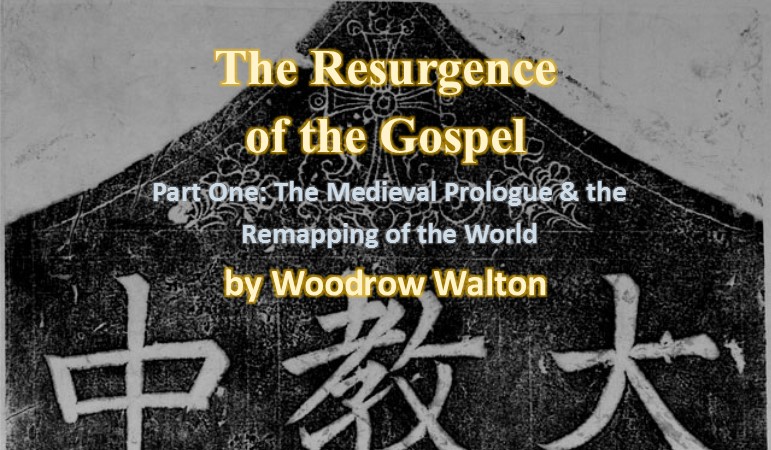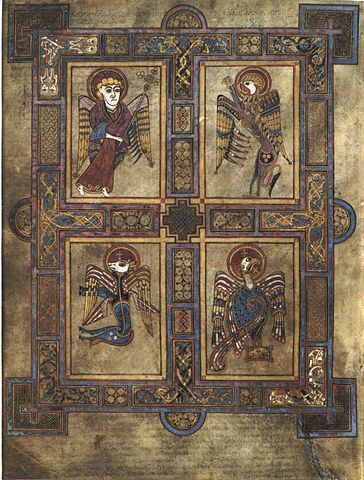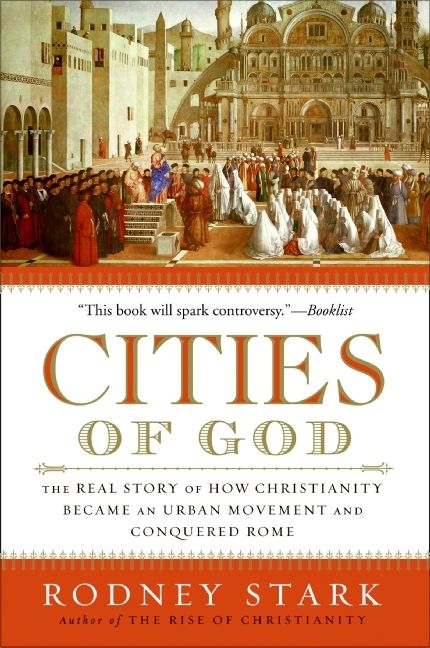The Resurgence of the Gospel, Part One: The Medieval Prologue and the Remapping of the World

The Resurgence of the Gospel and the Flowering of the Global Christian Message
Part One: The Medieval Prologue & the Remapping of the World

This article is part of The Gospel in History series by Woodrow Walton.
Image: The Books of Kells by way of Wikimedia Commons.
In Retrospect
By looking backwards to the beginning of the spread of the Gospel that Jesus is both Lord and Christ and considering the results of both the life, death and resurrection of Jesus and the message that Peter spoke at the Feast of the Pentecost, we are struck by the Power of the Holy Spirit to change lives and change the course of history and why, no matter the opposition and oppression, that gospel continued to spread. Other things factor in. The first factor is that of those who heard.
Those who heard Jesus were the Jews of the circle of the Gentiles (Galilee), the Jews of Judaea, and a mixture of peoples, Jew, Greek, Syro-Phoenician, and Samaritans to begin with, and a centurion or two within the Roman military system and stationed within Galilee and Judaea. There was a mixture of peoples and a mixture of social classes ranging from shepherds, to high status people, including a rich young ruler. The Gospel reached from those at the bottom to those at the top and officials as tax-gatherers. The news spread horizontally and vertically from among those who heard.
The visitors who were present when the Church began returned home and told of what they heard.
The visitors who were present when the Church began returned home and told of what they heard. When Peter, John, Philip the Deacon, and later Paul, started their missionary journeys, they were simply following up where these visitors came from: The Mediterranean world and its northern, southern, southeastern shorelines, up the Nile and the Gulf of Suez as well as northeast to the valley of the Tigris and Euphrates rivers and following their courses toward the Arabian Sea. The significance of this spread west and east is in the mode of travel. The early Christians traveled the waterways more so than by way of roads which were few and dangerous to travel. Even the Roman-built roads were not all that good across Anatolia [Asia Minor/modern Turkey], going from Antioch to Ephesus facing the Aegean Sea.

Rodney Stark, Cities of God: The Real Story of How Christianity Became an Urban Movement and Conquered Rome.
Most travelers went by ship, boat, or along the shores of rivers. As a result, most Christian communities were found in port cities such as Antioch, Caesarea, Troas, Ephesus, Corinth, Alexandria going west in the Mediterranean. The Roman military road from Capernaum and the upper shore line of the Sea of Galilee took one up to Damascus, Dura-Europos, and the towns along the Euphrates-Tigris waterways. Seldom were Christian churches found in the hinterlands. Most were found in shoreline cities. It was Wayne Meeks who first noticed that the earliest Christian churches were in urban areas; then it was Rodney Stark who wrote of how Christianity became an urban movement in his Cities of God (Harper San Francisco, 2006).
This was the situation of the resurgence of the gospel throughout the following centuries when persecution or invasions occurred. The Christians took to the sea or the waterways to spread the gospel to more distant lands. When persecution broke out in Jerusalem, Acts 8: 25-49 tells of Philip the Deacon’s ministry with a Treasurer of the Candace of Ethiopia (Roman name for modern Sudan). The roadway he traveled goes along the southeastern coast of the Mediterranean to the Nile river and then up the Nile to the city of Meroe, the capital of Ethiopia. The Angel of the Lord then turned Philip around and had him introduce the gospel along the Eastern Coast of the Mediterranean from Azotus to Caesarea, a major port for ships from Rome and the Aegean Sea. Acts 11:19 to 30 informs the reader that Christians from the Island of Cyprus and from Cyrene, the main port city of what is now Modern Libya in Northern Africa, were among the forerunners of the church in Antioch (modern Antakya), another major port city. This is but the start of the story.
Category: Church History, Summer 2018


